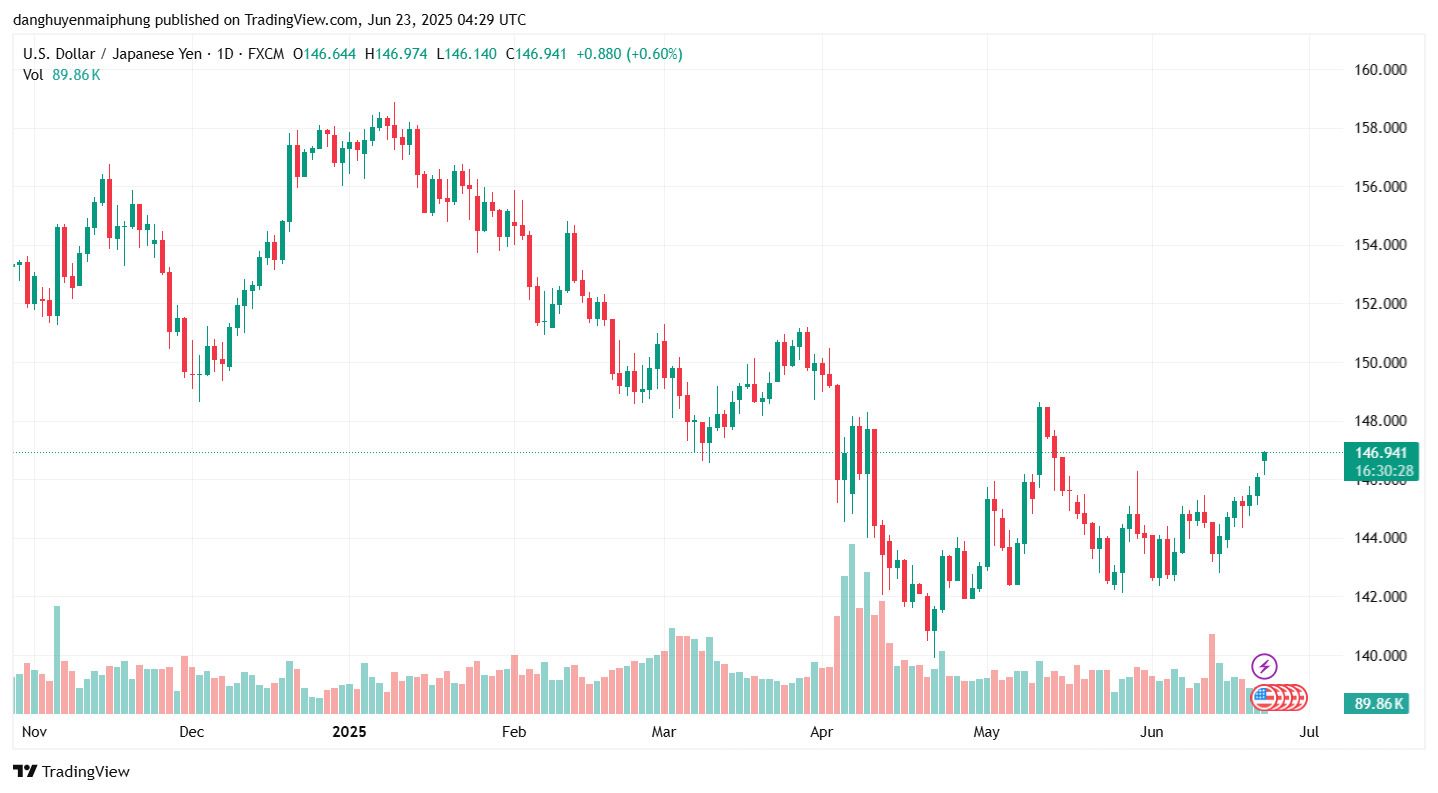Yen exchange rate today
According to Lao Dong, on June 23, the Japanese Yen (JPY) continued to weaken and fell to its lowest level since May 15, due to the USD's widespread increase.
The pressure increased after the Bank of Japan (BoJ) signaled that it would continue to be cautious in normalizing monetary policy, causing investors to adjust their expectations for the next interest rate hike.

Not only that, concerns related to US trade policy are also weighing on the JPY's outlook.
Yen under pressure
According to FXStreet, Washington's continued maintenance of a 25% tariff on imported cars from Japan and a 24% tariff on Japanese responses to US goods are raising concerns about the negative impact on the Japanese economy, which depends heavily on exports.
However, some positive signals from the domestic economy are somewhat rebalancing the picture. The National Consumer Price Index (CPI) in May continued to maintain above the BoJ's target of 2%. At the same time, the manufacturing PMI unexpectedly returned to the growth threshold, from 49.4 to 50.4. Service PMI and general PMI also rose to 51.5 and 51.4 respectively the highest level since February 2025.
However, the Yen has not been able to recover strongly due to pressure from global monetary policy. The US Federal Reserve (Fed) is expected to cut interest rates twice this year, but has been cautious in the coming years with only one 25 basis point cut in 2026 and 2027. This has caused the USD to continue to be supported.
On the geopolitical front, tensions in the Middle East are escalating after the US and Israel launched airstrikes on three Iranian nuclear facilities on Sunday. As a safe-haven asset, the JPY could benefit if the situation continues to worsen.
Investors are closely monitoring the reaction from Iran, as well as economic data and further policy signals from the BoJ and the Fed to determine the new direction of the USD/JPY pair in the coming time.











